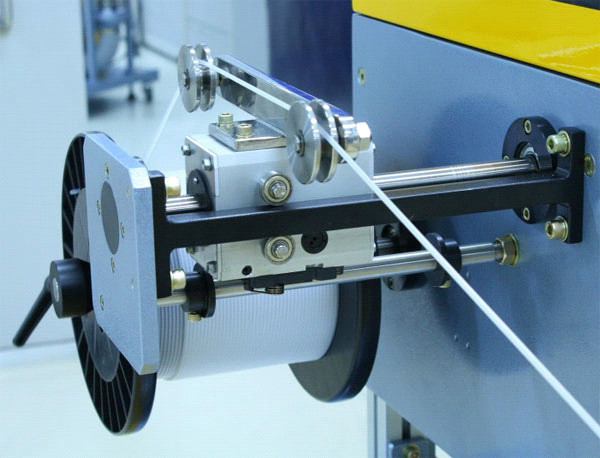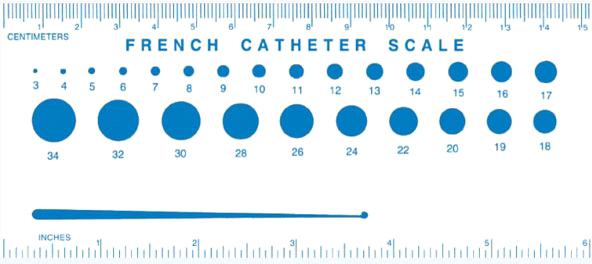|
Medical Polymers :
Emerging Trends & Opportunities
Medical Tubings : Common Applications
|
Sr. |
Materials |
Common
Applications |
|
1 |
Polyvinyl Chloride
PVC |
Containers used
for blood and blood components for urine or for
ostomy products and tubing used for blood taking
and blood giving sets, catheters, heart-lung
bypass sets, haemodialysis set etc. |
|
2 |
Polytetrafluoroethylene, PTFE |
Catheter liner,
Electrical Insulation, Fluid transfer,
Telecommunication |
|
3 |
Fluorinated
Ethylene |
IV catheter,
Regional Anesthesia, Vascular access |
|
4 |
Ethylene
Tetrafluoro ethylene, ETFE |
Fluid transfer, IV
catheter, Electrical insulation |
|
5 |
Perfluoroalkoxy,
PFA |
Fluid transfer, In
Vitro diagnostics |
|
6 |
NYLON, 6, 11, 12 |
Angiography,
Choloecstectomy, Epidural catheter, Laparoscopic
instruments, Radiology |
|
7 |
Polyether Block
Amide, PEBA |
Angiography,
Cholangeography, Epidural Catheter, Radiology |
|
8 |
Polycarbonate PC |
Laparoscopic
instruments, IV therapy, Laparoscopic cannulae,
Tube packaging, Microtubes |
|
9 |
High Density
Polyethylene LDPE |
Embolectomy,
Guidewire dispensers, Introducers, Protective
tubes, Thrombectomy, Sheaths and dilators for
introducers, Coextruded perfusion tubing,
Aspirator tips |
|
10 |
Low Density
Polyethylene LDPE |
Embolectomy,
Guidewire dispensers, Introducers, Protective
tubes, Throbectomy |
|
11 |
Polyurethane PUR
(Aliphatic) |
Angiography,
Cardiac catheters, Central Venous catheters,
Dialysis, Epidural catheters, IV catheters,
Epidural probes, Catheters, Highpressure lines |
|
12 |
Polyurethane PUR
(Aromatic) |
Angiography,
Cardiac catheters, Central Venous catheters,
Dialysis, Epidural catheters, IV catheters |
|
13 |
Polypropylene PP |
Guidewire
dispenser tubes and Protective tubes |
|
14 |
Ethylene Vinyl
Acetate EVA |
Endotracheal,
Embolectomy, IV therapy, Suction catheter |
|
15 |
ACETAL |
Laparoscopy,
Guiding catheter |
About Catheter Tubing :
Number of variables affect the performance of a
finished catheter the most paramount being the
properties of the raw material and the extrusion
process. Careful consideration of the extrusion
process is essential to ensure consistency and
repeatability.
Single- or dual-screw extrusion is used to manufacture
catheter tubing.
During the extrusion process, air at a specific
pressure is used to obtain the intended tubing shape.
A heat-transfer process begins as the polymer exits
the die. Air is used as the initial cooling medium,
followed by water in a cooling bath. A belt or wheel
hauloff (puller) pulls the tube from the die and
through the cooling bath at a controlled speed.
Because of the complexity of catheter tube
manufacturing, several parameters associated with the
extrusion process may affect the properties of the
finished product.
1 These parameters include:
Temperature profile.
Initial method of drying the polymer granules.
Temperature of the cooling bath.
Tubing dimensions.
Screw geometry.
Rotational speed of the screw.
The distance between the die head and the cooling
bath.
Polymer choice can also affect the finished
product's properties.

Critical Applications - Medical Tubing
Configurations - Material & Process Requirements For
High-Quality Extruded Tubing - Economics Of Extrusion
Enhancing performance and design
Following are the various features incorporated in the
catheter tubings to enhance performance depending on
the applications :
Braid/coil reinforcement for strength, rigidity and
torque control along the length of the catheter to
balance the need for flexibility and kink resistance
to navigate tortuous pathways.
Use of hydrophilic coatings delivers high lubricity
to achieve low insertion force or a reduction in
friction for a specific delivery application.
Soft tip and multi-durometer segments along the
length of the catheter provide atraumatic entry and
maneuverability.
Radiopaque contrast at the tip and key segments
offer better visibility for the physician to visualize
accurate anatomical placement.
Steerability and deflection help attain optimal
navigation.
Methods To Assess Tubing Properties :
Briefly. methods used to measure the effects of
extrusion parameters on the final product and for
comparison with the original polymer characteristics
include : optical microscopy, tensile testing,
rheometry testing, IR spectrophotometry, and enthalpy
differential analysis.
Measuring Catheter Tubing Sizes
Problems can arise when the customer and catheter or
tubing supplier are not using the same scale when
discussing catheter tubing sizes.
French scale and gauge scale are the measures used to
refer to the diameter of catheters and tubing. While
each have certain advantages, misinterpreting these
standards can lead to confusion. OD and ID are
abbreviations for outer dia meter and inner diameter,
respectively, and are generally measured in inches or
millimeters.

The catheter sizing classification most commonly used
in the medical industry is the French (Fr) scale, also
known as the Charriθres system. The French scale is
an easy method to use to describe the basic size of a
catheter, because it specifies the most obvious
component, the outer diameter. The French size = 3
times the diameter in millimeters. The disadvantage of
the French scale is that it does not specify the inner
diameter of the catheter or tubing. Thus, the French
sizing used alone, is not specific enough to
adequately describe small catheters, where internal
diameter is critical. This scale is much more useful
to specify larger catheter sizes.
A second method of sizing catheters is the gauge
measurement. Gauge is a descending scale, opposite the
French scale of measurement which ascends with
corresponding size. The higher the gauge size the
smaller the tubing.
Another less common method for sizing catheter tubing
is the PE scale. It is specific to polyethylene and
is an ascending scale used by some manufacturers to
represent the OD and ID of the tubing, similar to
French sizing.
The most definitive method to describe a catheters
dimension is simply to state the exact measurements of
both the outer and inner diameters. While it may seem
a little more difficult to communicate, this method
will actually give all the details necessary to the
researcher or catheter manufacturer to properly size
your specific catheter and catheter connections.
The Economics Of Extrusion
Important elements of Expenses in the medical tubing
extrusions are : Materials, Equipment, Direct Labour,
Others (includes : Power, Packaging, Insurance etc)
In most of the cases , the largest cost is the
material.
Extrusion is usually a 24-hour continuous operation.
Frequent starts and stops greatly increase production
costs.. |
